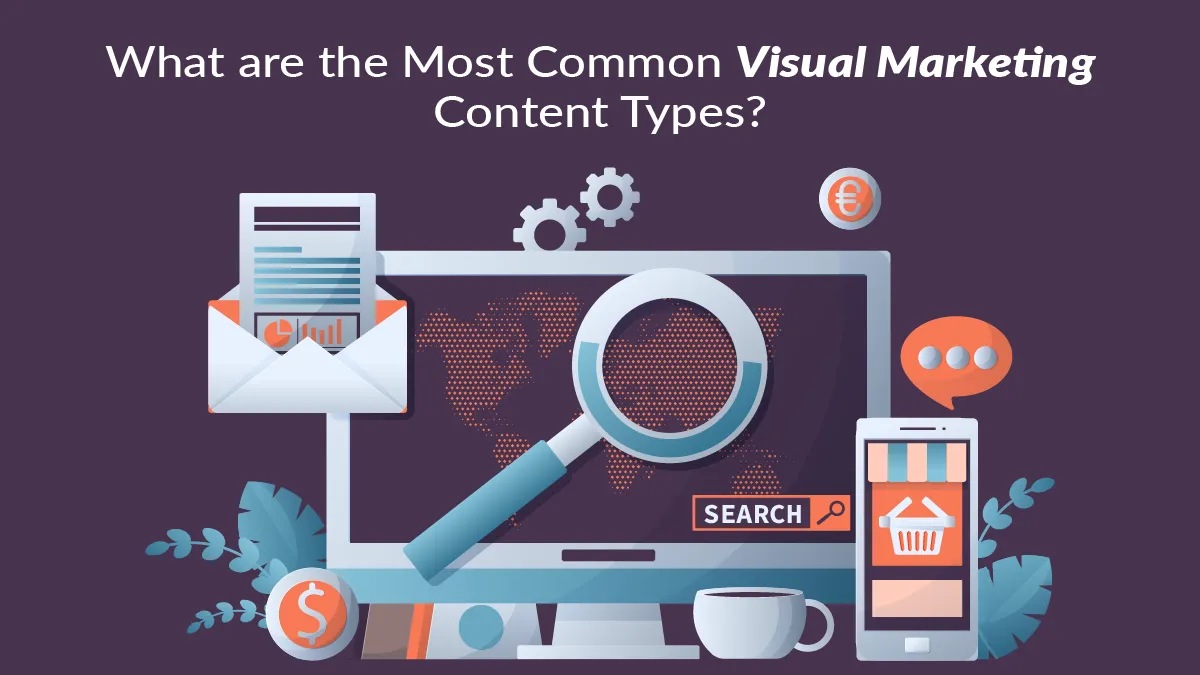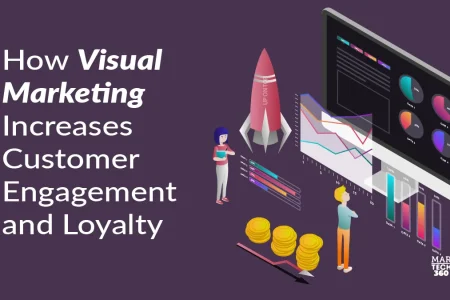In a world where we barely have time to focus, the average attention span is down to just 8.25 seconds! That’s why visuals work wonders—they grab attention and get the message across way faster than words. Developing a visual marketing strategy is a calculated move to capture your audience’s interest and improve outcomes because humans are visual creatures.
In addition to increasing sales and customer engagement, visual marketing can have an effect on your bottom line. It is applicable to sales, marketing, and customer support. Let’s keep going to see what makes this approach so powerful.
What is Visual Marketing?
Visual marketing, or visual advertising, uses eye-catching visuals to promote a brand or its products and reach an online audience. Images, videos, infographics, and other visual elements that support your brand’s message can all be used in a visual marketing strategy. Visual content marketing uses visuals with marketing messages. It shifts your ad’s focus from the content to the product. The most effective visual ads typically succeed. People respond better to nonverbal communication.
What are the Most Common Visual Marketing Content Types?

We think of many kinds of content when we hear the word “visual content.” These kinds of visual content are among the most popular and valuable kinds.
● Images
The most common type of visual content is images, which have been used for a very long period. Images are still used by e-commerce companies to succinctly and simply display their products. In order to educate consumers and foster trust, brands use images on social media accounts in addition to their websites.
For instance, articles with images get 650% more interaction than those with only text, and a client is 85% more likely to buy a product after seeing a product video.
● Videos
Videos are a great type of content that has revolutionized how companies showcase their goods. Videos are not only more captivating than other types of content, but they are also effective forms of social proof for companies. Businesses can increase client confidence and increase sales by displaying product videos on their website.
According to 88% of marketers, video is a crucial component of their marketing strategy and has produced a high return on investment.
● Memes
People in general typically find memes relatable and humorous. Meme marketing is a type of visual marketing in which companies use popular meme templates to advertise their products and brands. It has turned out to be a really successful social media marketing strategy for increasing visibility. Your audience is more inclined to share a relatable meme with others when they see it, which increases engagement.
● Infographics
Infographics are useful for communicating information even though they might not be the most aesthetically pleasing type of content. More than 78 percent of knowledge retention is attributed to infographics. This indicates that audiences are fascinated by numbers and are more likely to believe in a brand when it has them.
Website traffic might rise by up to 12% when infographics are included. Sixty-five percent of brands use infographics in their content marketing. They are thirty times more likely to be read than text articles.
● GIFs
GIFs are a fantastic tool for creating a strong brand identity. Like memes, GIFs are infused with relatability, humor, and the capacity to captivate target audience. It might be a scene from a popular show that people can relate to, a cartoon, or a film.
Also Read: CMO’s Playbook To Generative Engine Optimization
Why Are Visuals Important in Marketing?
Compared to words, the human brain can comprehend images up to 60,000 times more quickly. This is understandable given that written language has existed for a very little period of human existence. In terms of marketing, this implies that visual material is inherently more captivating and fascinating for users. Tweets with graphics, for instance, get up to five times as many interactions as those without.
In recent years, online consumers have shown a clear preference for visual content. Did you know that? It should come as no surprise that 65% of people learn best visually.
According to Kane and Pear’s study on visual communication, “Sight is our strongest sense: 90% of information transmitted to the brain is visual, and 40% of nerve fibers to the brain are connected to the retina.”
In 2021, over 51% of marketers reported using visuals in 91%–100% of their content, while 36.4% of that group employed original infographics or illustrations, according to a Venngage poll.
In a digital world, no company can exist without visual content. So, it must have a strong visual content marketing plan.
How to Develop a Winning Visual Marketing Strategy
It won’t be enough to just place some pictures next to the text. To really gain from graphics, it is essential to acquire a solid visual advertising approach.
● Ensure Consistency
To succeed as a brand, it is essential to have compelling content on the website, YouTube, Instagram, and other marketing platforms. Textual content on social media platforms needs to align with its visual content. The content that attracts people to your page is what they want to see.
● Visuals and Text Need to Be in Sync
Visual marketing components must all complement one another and the rest of the website. The visual advertising approach and the available resources must be balanced well. Although images are a fantastic way to draw in visitors, they can need more detailed explanations.
● Continue to Provide Support
Outperform rivals by providing assistance and useful information. A visual advertising plan aims to benefit your company. It should produce content that the target audience finds relevant, relatable, helpful, and educational.
● Conform to the Brand Identity
Using a variety of content to communicate your message while discussing your brand values as you always have is the greatest visual advertising technique. Utilize the power of images to improve content while maintaining the patterns, colors, and shapes that define your brand. To stay unique in the midst of the competition, it’s critical to add your own touch.
● Reuse and Repost
An editorial plan that incorporates reposts is a powerful visual marketing tactic since it raises the likelihood that readers who missed the original post will see your message. Creating remixes is a crucial additional application for your visual content. An infographic can be made into a video, for example, and vice versa.
● Avoid Generic Content
Because people are used to seeing identical stock images everywhere, a generic image could undermine your visual advertising plan. Using creative concepts while planning your visual advertising will help you achieve more success. For example, to get people’s attention, why not use a GIF or an animated short film instead of a standard image?
● Employ UGC Marketing
One of the most important components of a visual marketing plan for brand promotion is User-Generated Content (UGC) marketing. You can use UGC as earned media. Images, testimonials, videos, comments, social media posts, and more are all included. They are reliable kinds of brand marketing because they are created by the users.
Wrapping it Up
No other marketing strategy has ever given e-commerce firms as many chances as visual marketing. E-commerce companies have been able to communicate about their products in a way that has made them money by utilizing the power of visuals like videos and images.
E-commerce companies in a variety of industries have found this visual advertising strategy to be extremely beneficial, becoming an important part of any business. By successfully conveying offerings through eye-catching photos and videos, it increases profitability.
You may improve your brand communication, establish stronger ties with your audience, and accomplish your marketing objectives by adopting visual marketing tools and utilizing the power of appealing images and videos. Visual marketing proves that a picture is worth a thousand words, capturing attention and conveying your brand’s message instantly.

